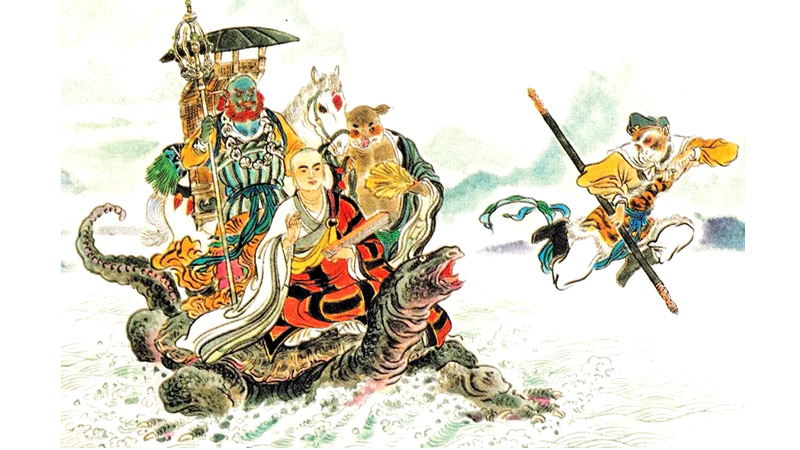The recent release of China’s first AAA video game, Black Myth: Wukong, and its viral popularity among the online gaming community has shone a spotlight on the story it’s inspired by.
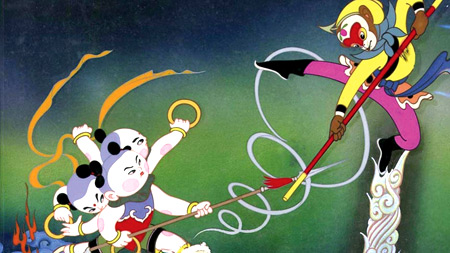 ‘Journey to the West’ is one of the four greatest classical novels in Chinese literature and is widely regarded as the most popular literary work in East Asia, influencing countless adaptations in various forms of media to this day, including books, films, television series, and even video games.
‘Journey to the West’ is one of the four greatest classical novels in Chinese literature and is widely regarded as the most popular literary work in East Asia, influencing countless adaptations in various forms of media to this day, including books, films, television series, and even video games.
‘Journey to the West’, ‘Romance of the Three Kingdoms’, ‘Water Margin’, and ‘Dream of the Red Chamber’, are commonly grouped together as the four great classical novels or four masterworks of Chinese literature.
 Written centuries ago sometime around the Ming and Qing Dynasties, they are some of the oldest (and longest) literary works in the world. They were monumental in shaping Chinese culture, literature, and thought throughout history, with their influences clearly seen in today’s popular media both within China and worldwide.
Written centuries ago sometime around the Ming and Qing Dynasties, they are some of the oldest (and longest) literary works in the world. They were monumental in shaping Chinese culture, literature, and thought throughout history, with their influences clearly seen in today’s popular media both within China and worldwide.
Though they share the status of being the bedrock of Chinese literature, these stories have very little to do with each other, not in origin, writing style, or subject matter.
From China to India
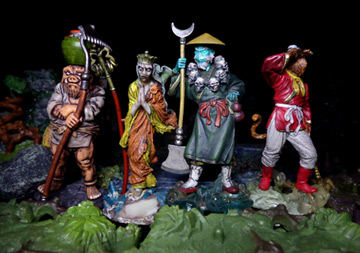
Journey to the West, written in the 16th century by Wu Cheng’en, is a fantastical retelling of the historical pilgrimage of the Buddhist monk Xuanzang.
The novel chronicles the monk’s (Tripitaka or Tang Sanzang as he is referred to in the story) arduous journey from China to India to retrieve sacred Buddhist scriptures, accompanied by three mythical disciples; Zhu Bajie (or Pigsy as he is commonly translated), the pig-like warrior; and Sha Wujing (Sandy), the river ogre and of course, far and away the breakout character of the tale, Sun Wukong (Monkey), the powerful Monkey King.
The story spans a hundred chapters, is largely episodic, and pulls in characters from prior Chinese myths and folklore into its broad narrative. The story has a vibrant mix of myth, folklore, and religious allegory with each character embodying different aspects of human nature. Sun Wukong, the rebellious and powerful Monkey King, represents the mind’s potential and its need for discipline.
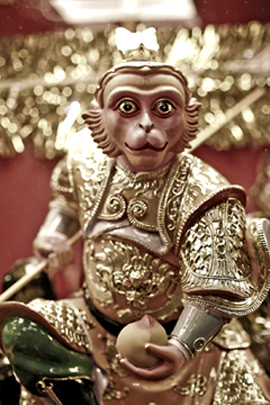
Tang Sanzang, symbolises humanity’s purity, and compassion, but also human frailty while Pigsy represents human desire and Sandy, patience and sober balance. Their journey is a metaphor for the quest for spiritual enlightenment, with each trial and tribulation serving as an allegory for the obstacles faced on the path to self-realisation.
Though the story is centuries old now, its applicability and masterful storytelling are timeless, making it an enjoyable read even today.
Spiritual themes
Sun Wukong’s character, in particular, has become iconic, symbolizing the power of wit, strength, and perseverance. His evolution from a mischievous troublemaker to a disciplined follower of Tang Sanzang reflects the novel’s deeper spiritual themes rooted in Buddhism, Taoism, and Confucianism.
On a narrative level, Monkey’s colorful personality, awe-inspiring strength, humanizing flaws, and character growth have endeared him as a cultural icon to readers throughout history and served as direct inspiration for many similar characters in popular culture, the most well-known being Son Goku of Dragon Ball.
The other great masterworks couldn’t be more different from the “Journey to the West” but are no less important to Chinese culture and history. “Romance of the Three Kingdoms”, attributed to Luo Guanzhong, is China’s most widely read historical novel and is set in the turbulent years at the end of the Han dynasty and the Three Kingdoms period (220–280 AD) which resulted in the historical unification of China.
Song dynasty
‘Water Margin’, also known as ‘Outlaws of the Marsh’, is attributed to Shi Nai’an. It tells the story of a real-life Robin Hood-like outlaw called Song Jiang and his 108 companions who form a rebel army against corrupt officials during the Song dynasty.
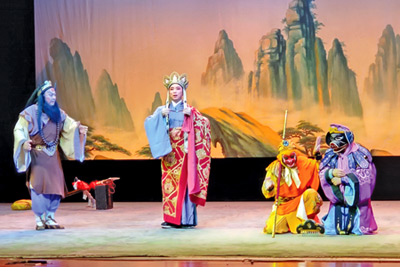 Dream of the Red Chamber, written by Cao Xueqin, is a detailed portrayal of the rise and fall of a noble family, centering around a tragic love story.
Dream of the Red Chamber, written by Cao Xueqin, is a detailed portrayal of the rise and fall of a noble family, centering around a tragic love story.
It offers a vivid depiction of life in 18th-century China and is revered for its literary artistry and psychological depth, to the extent that an entire academic field of study, Redology, is dedicated to exploring every aspect of the story.
The four great classical novels have left an indelible mark on Chinese culture and continue to be revered as literary treasures. Each novel offers a unique perspective on different aspects of Chinese history, society, and philosophy, making them essential reading for anyone interested in understanding China’s rich cultural heritage.





